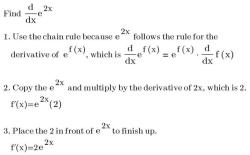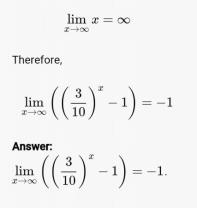What is an ode equation?
An ODE equation, or Ordinary Differential Equation equation, is a mathematical equation that describes how a function changes with respect to an independent variable. These equations involve a single independent variable and one or more derivatives of an unknown function with respect to that variable. Ordinary Differential Equations are used in various scientific and engineering fields to model dynamic processes and phenomena where rates of change matter.
The general form of an ordinary differential equation is:
Here's what the components of this equation represent:
- is the independent variable, often representing time or another continuous parameter.
- is the unknown function you want to solve for.
- represent the first, second, and nth derivatives of with respect to .
- is a mathematical expression that relates , , and its derivatives in some way.
The goal in solving an ODE equation is typically to find the function that satisfies the equation for a given range of values of and with specified initial conditions, such as and .
ODEs can be categorized based on their order and linearity:
Order: The order of an ODE is the highest derivative present in the equation. For example, a first-order ODE contains the first derivative , a second-order ODE contains the second derivative , and so on.
Linearity: ODEs can be classified as linear or nonlinear. Linear ODEs can be written as a linear combination of and its derivatives, whereas nonlinear ODEs involve nonlinear terms that may not be expressed as a simple linear combination.
ODEs have a wide range of applications, from modeling population dynamics and chemical reactions to describing the behavior of electrical circuits and mechanical systems. Solving ODEs can involve analytical methods, such as separation of variables, substitution, or integrating factors, or numerical methods like Euler's method, the Runge-Kutta method, and more sophisticated techniques for complex problems. The choice of method depends on the nature and complexity of the ODE and the specific problem being addressed.
Ordinary differential equations (ODEs) are mathematical equations that describe the relationship between a function and its derivatives. ODEs are used in many different fields, such as physics, engineering, chemistry, and biology.
Deciphering Ordinary Differential Equations (ODEs)
ODEs can be written in a variety of forms, but the most common form is:
F(x, y, y', y'', ...) = 0
where:
xis the independent variableyis the dependent variabley',y'', etc. are the derivatives ofy
The function F() is a function of x, y, and `y's derivatives.
To solve an ODE, we need to find the function y that satisfies the equation. This can be done using a variety of methods, such as separation of variables, linear differential equations, or exact differential equations.
What You Need to Know About ODE Equations
Here are some of the things you need to know about ODEs:
- ODEs can be classified into two types: linear and nonlinear. Linear ODEs are easier to solve than nonlinear ODEs.
- ODEs can also be classified according to their order. The order of an ODE is the highest derivative of
ythat appears in the equation. - ODEs can have multiple solutions. In some cases, the solution to an ODE can be expressed in terms of known functions. In other cases, the solution can only be approximated numerically.
Unveiling the World of Ordinary Differential Equations
ODEs are used in many different fields to model and solve real-world problems. For example, ODEs can be used to model the motion of a projectile, the spread of a disease, or the growth of a population.
ODEs are also used to design controllers for systems such as airplanes, robots, and chemical plants.
Examples of ODEs
Here are some examples of ODEs:
- Motion of a projectile:
dy/dx = v
dv/dx = -g
where y is the position of the projectile, v is the velocity of the projectile, and g is the acceleration due to gravity.
- Spread of a disease:
dy/dx = ky(1 - y/N)
where y is the number of infected people, k is the infection rate, and N is the total population.
- Growth of a population:
dy/dx = ky
where y is the population size and k is the growth rate.
Conclusion
ODEs are a powerful tool that can be used to model and solve a wide variety of real-world problems. If you are interested in learning more about ODEs, there are many resources available online and in libraries.













